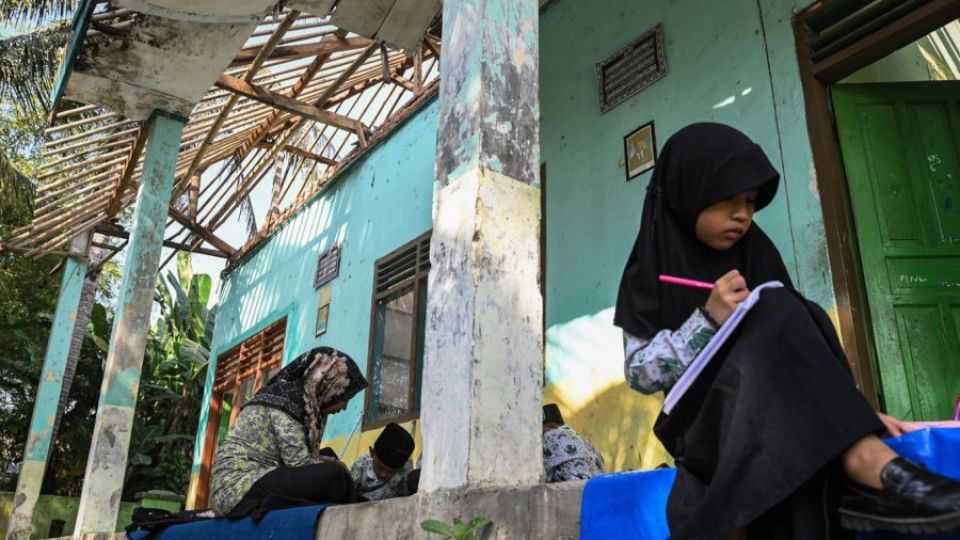September 9, 2024
JAKARTA – The Finance Ministry has proposed changing the mandatory education budget from 20 percent of state expenditure to 20 percent of state revenue, raising concerns among experts that the new mechanism would cut funding overall for solving the perennial problems plaguing national education system.
The 1945 Constitution mandates a minimum education allocation of 20 percent of the state budget, but it does not specify whether this refers to 20 percent of state expenditure or revenue. The education budget is currently calculated as 20 percent of state spending.
But in a meeting on Wednesday with the House of Representatives Budget Committee (Banggar), Finance Minister Sri Mulyani Indrawati unveiled a proposal to change the allocation to 20 percent of state revenue instead, arguing that the volatile nature of government spending meant the current mechanism was ineffective and burdened the state coffers.
For example, the 2022 education budget increased by default after the government increased the energy subsidy by Rp 200 trillion (US$12.9 billion) in the middle of the fiscal year due to rising oil prices, but educational institutions could not absorb the extra funds in the adjusted education budget because academic programs were already underway.
Banggar head Said Abdullah, who hails from the Indonesian Democratic Party of Struggle (PDI-P), agreed with the minister’s proposed mechanism, and told the meeting he would write a letter to the House Legislation Committee (Baleg) to revise the 2003 National Education Law.
Read also: Govt digs into education, regional reserves for Prabowo’s Quick Win
Funding cut fears
The proposal immediately raised concern among experts, who expressed fear that the new mechanism would result in lowering the overall allocation for education in the state budget.
“It will only exacerbate education inequality in the country, considering the fact that many teachers are still paid far below the minimum wage and children in remote regions and among the urban poor are still struggling to access quality education,” said Anggi Afriansyah, a researcher at the National Research and Innovation Agency (BRIN).
More than 731,000 teachers nationwide were contract teachers in 2023, according to the Administrative and Bureaucratic Reform Ministry, and three out of four teachers were paid below the minimum wage.
UNICEF data show that conditions are no better for students. Although children today have more educational opportunities than ever before, 4.1 million of children aged 7-18 years were not in school. Children at higher risk are from the poorest families, have disabilities or reside in underdeveloped regions.
Under the current mechanism, the government provides fully subsidized tuition for all public schools. However, Indonesia still ranks among the world’s top 15 countries for highest education costs, according to an HSBC survey in 2018.
Better management
Satriwan Salim, national coordinator of the Education and Teachers Association (P2G), highlighted that poor management was more of an issue at present than the amount of the budget, since the majority of funds transferred to local administrations were used “for other purposes” than education.
“Although the amount of the budget allotted by the government for the education sector keeps rising, the funds schools receive through the School Operational Assistance [BOS] is actually very small and has remained largely stagnant,” he said.
The BOS is an annual regional fund sourced from the state budget and is primarily intended to support school operations, including the salaries of contract teachers and facilities maintenance.
This year’s state budget allocation for education totaled Rp 665 trillion, an increase of 7 percent compared to the 2023 education budget. Of this amount, 52 percent was transferred to regional administrations, which use the funds with lax monitoring from the central government.
Several reports have emerged about local authorities using the education funds for unrelated infrastructure and village assistance, as well as other noneducational purposes.
Read also: Understanding Nadiem’s big splash in education sector
Management of the education budget also has been largely loose, with around Rp 111 trillion, or 18 percent, left unused of last year’s Rp 621 trillion earmarked for education.
Rather than changing the mechanism from 20 percent of state spending to 20 percent of state revenue, Satriwan urged the government to improve monitoring the fund’s regional use. He also pushed for better budget management to ensure that the fund was used fully to improve education across the nation.


